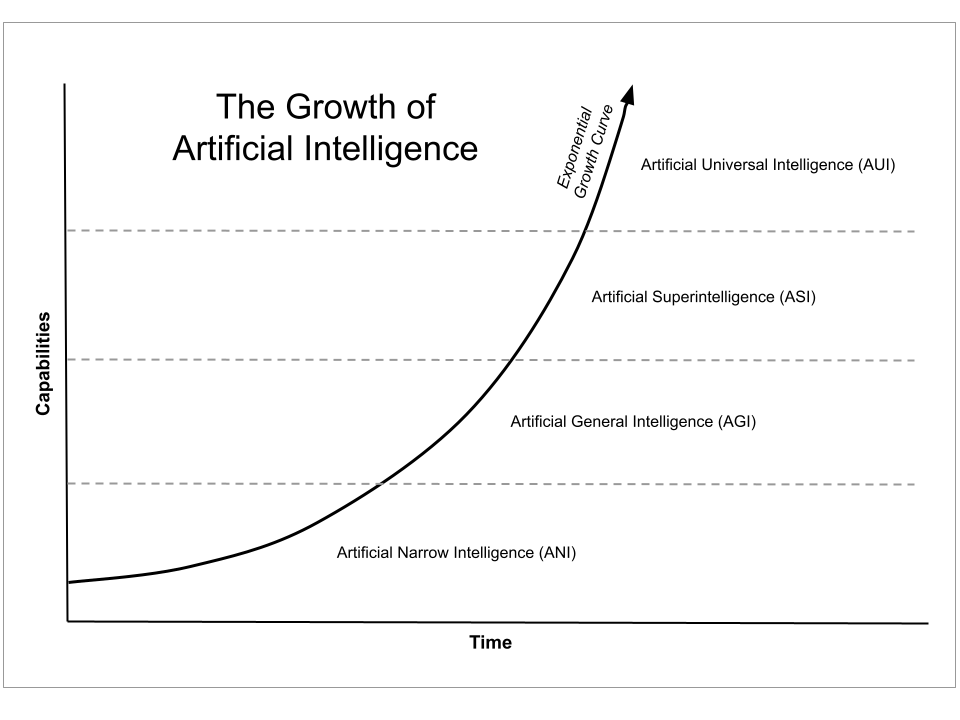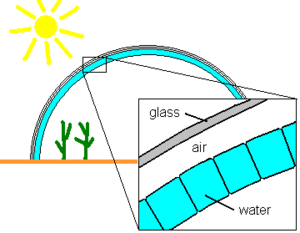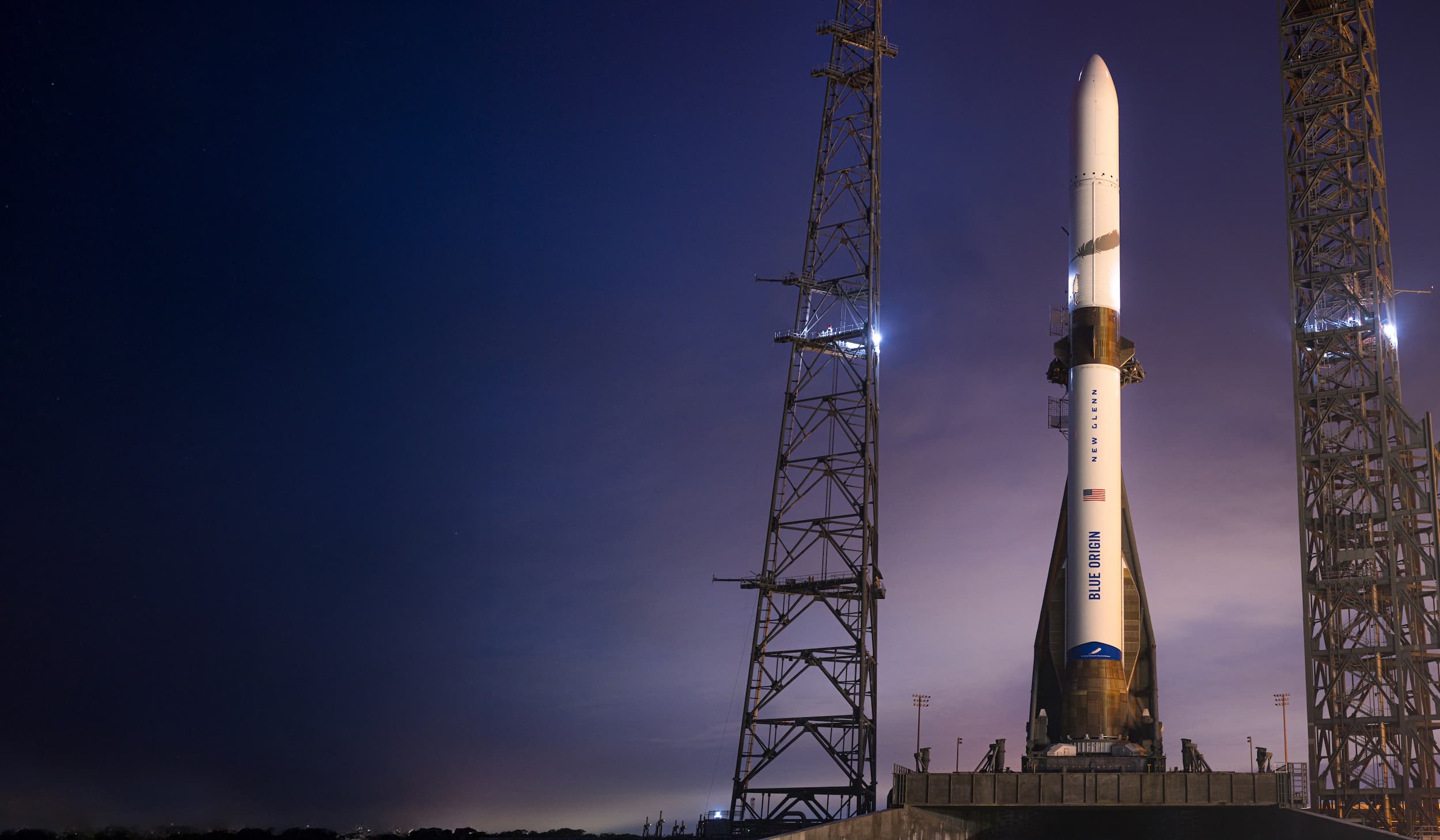How 2025’s tech wave (robotic learning, EUV, 3D AI chips, immune rewiring and more) will reshape the near future — a deep synthesis
The second half of 2025 delivered a remarkable cluster of breakthroughs across robotics, semiconductors, and life sciences. Taken together they form a multiplying effect: faster hardware enables larger, cheaper AI models; smarter AI accelerates lab automation and discovery; better chips make AI practical at the edge; and advances in immunology and therapies let software-driven discovery move rapidly toward clinical impact. Below I synthesize the key advances, explain what benefits they bring, how they accelerate other sectors, and what to watch for in the next 3–10 years.
Quick summary of the anchor stories
A robotic arm trained with a new multi-task imitation method learned 1,000 manipulation tasks in a single day, showing dramatic gains in data-efficiency for robot learning. (Tech Xplore)
Reports claim China has prototyped a first EUV lithography machine, which — if confirmed and scaled — would reshape global semiconductor supply and competition. (Wccftech)
A Stanford-led team fabricated a truly 3D AI chip at a U.S. foundry (CNT transistors + on-die RAM), reporting notable performance and energy improvements for AI workloads. (Tom's Hardware)
New immunology research (Nature coverage) and Stanford findings highlight mRNA-driven immune rejuvenation and an immune “switch” tied to cancer/autoimmunity pathways — promising routes for therapies and safer immune engineering. (Nature)
Part 1 — Concrete benefits and near-term applications
1) Robotics: fast, cheap scaling of manipulative skills
The MT3-style approach (trajectory decomposition + retrieval-based generalization) shows robots can learn many distinct manipulation tasks from few demonstrations and deploy immediately. Practical effects:
Warehouse & logistics: robot cells could be re-tasked for new SKU types with minutes of demonstrations rather than weeks of retraining; faster SKU onboarding and lower downtime. (Tech Xplore)
Small-batch manufacturing & repair: service robots that learn new tools/parts quickly let factories pivot faster and reduce human bottlenecks.
Care & household robotics: more capable home assistants that can learn user-specific chores from one demonstration (folding, handling fragile items).
Net: cheaper robotic labor, faster deployment cycles, and a much larger set of real-world tasks solved without massive data or giant models.
2) Semiconductor independence and capacity (EUV prototype)
If China’s reported EUV prototype matures to production it changes strategic balance:
Supply resilience: regional fabs closer to demand lower geopolitical risk and shipping latency for chips. (Wccftech)
Competition pushes innovation: more fabs with EUV capability increase fab investments, which drive tooling, materials, and packaging innovation.
Downstream effect: broader, cheaper availability of advanced nodes lowers cost of powerful edge devices and datacenter accelerators — enabling wider AI deployment.
3) True 3D chips: density, speed, and energy wins
A 3D die integrating CNT transistors and RAM on one die produces major energy-delay improvements:
Edge AI leap: orders-of-magnitude lower energy per inference means heavy AI on battery-powered or embedded devices (drones, sensors). (Tom's Hardware)
Smaller datacenter footprint: better energy-delay product reduces cooling and power costs, allowing denser AI clusters and cheaper compute-per-query.
New system designs: architects will shift toward vertically integrated dies (logic + memory + analog accelerators) — fewer data-movement bottlenecks.
4) Immune engineering & mRNA: safer, programmable biology
mRNA-based rejuvenation of immune cells and discovery of immune “switches” open therapeutic avenues:
Cancer & autoimmunity therapies: switch-based targets enable precision toggles of immune states — better immunotherapies with fewer off-target autoimmune effects. (Nature)
Faster clinical pipelines: mRNA’s modularity speeds trial design for cell-state reprogramming and transient interventions.
Synergy with AI: AI accelerates design of mRNA constructs, predicts immunogenicity, and optimizes dosing, cutting time and cost to trial.
Part 2 — Cross-sector multipliers: how the advances feed each other
Hardware × AI × Robotics — virtuous loop
3D chips make on-device, low-latency AI affordable. That enables real-time perception and control for robots (faster closed-loop control, less cloud dependence). (Tom's Hardware)
Robotic experimentation generates structured, labeled data (manipulation trials), improving simulation-to-real transfer and allowing AI models to generalize without enormous synthetic datasets. (Tech Xplore)
Semiconductors × National strategy
Wider access to EUV and domestic fabs reduces single-source risk. That increases capacity for specialized nodes (e.g., analog mixed-signal chips for sensors, photonics) — speeding rollout of IoT and edge AI.
AI × Biotech
Large models accelerate molecule design and mRNA sequence optimization. Improved chips mean these models can be deployed in lab instruments (on-site drug discovery).
Robotic automation (cheap, fast to reprogram) allows higher-throughput wet-lab experiments, making the loop of design–test–learn far shorter.
Data & software infrastructure
As compute and robotics cost fall, more data will be generated in the field (manufacturing logs, clinical assays, robot demonstrations). That fuels better models — provided data governance and privacy keep pace.
Part 3 — Sector-by-sector impact (practical forecasts, 1–5 years)
Manufacturing & Logistics (1–3 years)
Rapid deployment of flexible robot cells for short-run manufacturing.
Autonomous fulfillment centers that reconfigure on demand.
Reduced labor costs and higher throughput for e-commerce.
Healthcare & Pharma (2–4 years)
mRNA therapies for immune modulation enter more clinical trials; expect early-stage human trials targeting age-related immune deterioration, cancer adjuvants, and autoimmune modulation. (Nature)
AI-driven discovery shortens lead identification timelines; robotized labs scale experiments, moving more candidates to trials faster.
Consumer Devices & Edge AI (1–4 years)
Richer local AI on phones, AR/VR headsets, and wearables using energy-efficient 3D chips — better battery life and on-device privacy. (Tom's Hardware)
National Security & Supply Chains (3–6 years)
Domestic EUV capability changes risk calculations for chip embargo strategies; countries will redouble investments in foundry ecosystems. (Wccftech)
Research & Scientific Instrumentation (Immediate to 3 years)
Lab automation using few-shot robotic learning allows researchers to prototype apparatus and assays quickly; robotic platforms become lab staples for repetitive prep tasks. (Tech Xplore)
Part 4 — Risks, constraints, and what must be solved
1) Safety & verification for learned robotic skills
Few-shot learned trajectories that “replay” actions must be verified for safety in new contexts (object geometry changes, human proximity). Production systems should add certifiable fallbacks, simulation validation, and runtime monitors. (Tech Xplore)
2) Fabrication bottlenecks and Technological parity
EUV reports are significant but the devil is in industrialization — source control for EUV components (lasers, optics, masks) and yields matter. Even if prototypes exist, scaling is nontrivial. (Wccftech)
3) Supply chain & geopolitics
More regional fabs help resilience but also raise export-control tensions. Countries and companies will need transparent interdependence strategies.
4) Biological safety and governance
mRNA and immune reprogramming are powerful; governance, robust clinical validation, and long-term safety studies are essential. Data provenance, reproducibility, and oversight frameworks must keep pace. (Nature)
5) Energy & materials
3D chips and fabs reduce some costs but increase demand for specialty materials, cooling, and fabrication infrastructure. Sustainable supply and recycling strategies must be prioritized. (Tom's Hardware)
Part 5 — Concrete recommendations (for companies, governments, and researchers)
For industry leaders
Invest in modular robotics + few-shot learning pilots (warehouse, packaging, lab automation). Early adopters will retire manual SOPs faster.
Prototype systems on new 3D chip platforms to be competitive when those parts become available; adapt software stacks to exploit stacked memory and lower-latency fabrics. (Tom's Hardware)
Partner with regional fabs and diversify procurement to hedge geopolitical risk.
For healthcare & pharma
Prioritize translational pipelines that combine AI design, automated wet-lab validation, and rapid small-scale clinical trials for immune-modulation therapies. (Nature)
Invest in safety scaffolding: adverse-event surveillance, long-term biomarker tracking, and post-market studies.
For governments & policy
Fund foundry & tooling ecosystems (photolithography optics, materials, mask-making) and avoid single points of failure.
Update regulatory frameworks for AI-driven biological design and for robots operating in close human proximity.
For researchers
Open benchmarks for few-shot robotic learning and real-world safety tests (simulation↔real transfer).
Cross-disciplinary projects that bind chip architects, roboticists, AI researchers, and life scientists to close the design–fabrication–application loop.
Part 6 — What else in 2025 matters (brief sweep of related innovations)
Beyond the anchor stories you gave, 2025 also featured:
Advances in lab-scale automation and microfluidics that reduce reagent costs and increase experiment throughput (complements AI-driven design).
Progress in photonics and cryo-CMOS packaging that pair well with stacked 3D dies.
Increasing use of foundation models in biology (protein / RNA design) and chemistry (material discovery), with toolchains maturing from research demos to internal pharma pipelines.
Final takeaways — why this cluster matters
What’s striking about late-2025 isn’t any single breakthrough but the convergence: more programmable robots that learn quickly, smarter AI supported by denser, more efficient chips, and biological interventions that are designable and testable with computational aid. Each domain lowers friction for the others:
robots produce data and execute experiments;
better chips make AI affordable at the edge and in labs;
AI designs molecules and intervention strategies;
and improved fabrication (like EUV) supplies the hardware backbone.
Taken together, expect faster innovation cycles, more distributed AI, and accelerating automation across manufacturing, healthcare, logistics, and research. The next 3–5 years will be about converting these capabilities into robust, safe, and regulated products — the technical breakthroughs are here; the industry now needs engineering, governance, and integration to realize the potential.
Sources (key reads)
Robotic arm learns 1,000 tasks in a day — TechXplore (Science Robotics coverage). (Tech Xplore)
China EUV prototype report — Wccftech. (Wccftech)
3D AI chip at U.S. foundry (CNT + RAM) — Tom’s Hardware. (Tom's Hardware)
mRNA immune rejuvenation — Nature. (Nature)
Stanford immune-switch study — Stanford Medicine release. (Stanford Medicine)
Top 10 biotech & longevity breakthroughs 2025
1) One-shot CRISPR cholesterol therapy
2025 marked the first real validation that gene editing can replace lifelong medication. A single CRISPR-based infusion permanently silenced genes involved in LDL cholesterol production, cutting LDL by ~50% and triglycerides by ~55%. Unlike statins, the effect doesn’t fade with compliance issues. This opens the door to once-in-a-lifetime treatments for cardiovascular disease, still the world’s leading killer. If long-term safety holds, preventive cardiology may shift from pills to precision gene edits.
2) Fully personalized CRISPR treatment in under 6 months
For the first time, a bespoke gene-editing therapy was designed, tested, approved, and delivered to a single infant with a rare genetic disease—inside six months. This shattered the belief that personalized medicine is too slow or expensive. The case proved that regulatory pathways can adapt to n=1 treatments when lives are at stake. It sets a precedent for ultra-rare diseases previously considered untreatable. Medicine is moving from mass production to on-demand biology.
3) COX7RP protein boosts lifespan and muscle health
Researchers showed that increasing levels of the mitochondrial protein COX7RP extended mouse lifespan while improving metabolism and muscle function. Unlike longevity interventions that trade lifespan for frailty, this one improved healthspan simultaneously. The findings reinforce mitochondria as a central lever of aging. Better energy efficiency, less metabolic decline, and preserved muscle could translate directly to human aging therapies. Aging may increasingly be treated as a mitochondrial optimization problem.
4) Oxytocin + ALK5 inhibition extends lifespan ~70%
In aged male mice, a surprising combo—oxytocin signaling enhancement plus ALK5 inhibition—extended lifespan by roughly 70%. Even more striking, the intervention worked late in life, not just as a preventative. This challenges the idea that aging clocks can’t be meaningfully reset once advanced. The work links social-hormonal pathways with cellular aging control. It hints that longevity may depend as much on signaling balance as on damage repair.
5) AI-discovered longevity drugs
AI systems screened millions of molecular interactions and identified novel compounds that extended C. elegans lifespan by over 70%. These weren’t minor tweaks of known drugs, but entirely new chemical candidates. This validates AI not just as an accelerator, but as a discoverer of biology humans might miss. The worm results are an early step, but historically predictive. Drug discovery timelines may compress from decades to years—or less.
6) Brain–computer interfaces enter real medicine
With 25+ active clinical trials, brain–computer interfaces crossed from experimental curiosity into clinical reality. Companies like Neuralink and Synchron expanded beyond cursor control into robotic limb and device operation. Patients with paralysis are beginning to interact with the world in ways previously impossible. The brain is becoming a programmable interface. This isn’t augmentation hype anymore—it’s functional restoration.
7) Gene-edited pig liver transplant in a human
In 2025, a gene-edited pig liver was transplanted into a human and functioned for 10 days. While temporary, this proved that complex solid-organ xenotransplants are no longer science fiction. Liver function is biochemically demanding, making this milestone especially significant. With organ shortages worsening globally, xenotransplantation may become a bridge—or even a permanent solution. Biology is being rewritten to solve infrastructure problems in healthcare.
8) Pig kidney xenotransplant survives 271 days
A pig kidney transplant survived 271 days in a human using mostly standard immunosuppression—a record. This suggests gene edits are now doing the heavy lifting, not extreme drug regimens. Kidneys are the most in-demand transplant organs worldwide. If consistency improves, waiting lists could collapse. What dialysis did for the 20th century, xenotransplants may do for the 21st.
9) Mitochondrial transfer to reverse biological age
Mitrix Bio claims its mitochondrial transfer technology can reset cellular energy systems, potentially reversing biological age by decades. While still controversial, early data suggests restored ATP production and reduced aging markers. If validated, this would target aging at one of its deepest roots. Instead of fixing downstream damage, cells get a new power source. Aging might become a reversible state, not a one-way decline.
10) Turn Bio’s mRNA-driven cellular self-repair
Turn Bio demonstrated mRNA therapies that instruct cells to repair damaged tissue from within, without changing DNA. This approach avoids many risks of gene editing while delivering rejuvenation effects. It echoes embryonic repair programs—temporarily reactivated in adult cells. The implication is profound: healing could mean restoring original cellular instructions, not scar-based repair. Regenerative medicine is becoming programmable.
Bottom line:
2025 wasn’t about promises—it was about proof. 2026 isn’t approaching the future. It’s continuing it.











